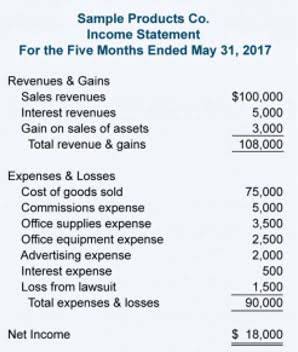What Is Performance Budgeting and How Does It Work?

However, a substantial ambiguity still remains on how to define and implement performance-based budgeting. A somewhat close definition is that performance-based budgeting apportions resources in accordance with specific achievement or quantifiable results. Performance budgeting can also be defined as systems of planning, budgeting, and appraisal that focuses the link between budgeted funds and the expected outcome. Therefore, performance-based budgeting links measurable performance and allocation of resources, with the capacity to state the level of achievable output with the injection of additional resources. Fund distribution and prioritization translate strategic objectives into actionable financial plans. This begins with thoroughly assessing programs and initiatives, weighing their potential impact against organizational goals.
- The decision process for performance budgets focuses on outputs—or outcomes—of services.
- The strategies and the budget are communicated to the forefront employees who perform routine activities.
- It is the final step that corrects the deviations in the process and performance.
- Performance-based budgeting has introduced a rational but tougher budgeting approach in both sectors.
- FreeBalance’s team of experts have years of experience helping governments large and small improve their spending efficiencies through performance-based budgeting.
- It is aimed to improve the efficiency of the people involved in performing the budgeted task as per the budget.
Purpose

After developing the processes and identifying the real estate cash flow steps involved, it is required to plan for the financial requirement and prepare a financial budget for the processes planned. It is another step to developing the criteria on which the processes and plans will be rolled out. It is also essential to develop a basis to measure the performances of the persons involved in the processes. Then, with the help of proper information, the management can implement techniques for improvement and take appropriate actions to resolve the issues involved.

Quick Links
In addition, connecting resource allocation with the performance provides vital information on how much money is required to attain a given level of outcome. Implementing a performance budget requires a structured approach that integrates strategic planning with financial management. Performance-based budgeting has been the center of reforms in both the private and the public sectors.
📆 Date: May 3-4, 2025🕛 Time: 8:30-11:30 AM EST📍 Venue: OnlineInstructor: Dheeraj Vaidya, CFA, FRM

Performance budgets, as the theory unearned revenue goes, are designed to motivate workers, increasing their commitment to the project and making it more likely that they will produce the desired results. Metrics like improved service delivery times or enhanced customer satisfaction help optimize resource utilization. For example, a logistics company might use real-time analytics to track delivery times, reducing delays and improving both customer satisfaction and cost efficiency. In schools, teachers may earn bonuses or promotions based on aggregate test scores among their students, which is supposed to show a high degree of skill and effectiveness (although this may not always be the case). Adam Hayes, Ph.D., CFA, is a financial writer with 15+ years Wall Street experience as a derivatives trader.
- If the performance of the business massively deviates from the plan, business strategies are re-assessed because a number of the earlier assumptions may have changed.
- Budgets with only targets and goals can be excessively indefinable, resulting in imprecise prediction and excessive expenditure.
- A performance budget is a results-oriented method of budgeting that revolves around desired outcomes.
- Additionally, fund distribution requires flexibility to address changing circumstances, such as economic fluctuations or shifts in public policy.
- Initially, steps in implementing the performance-based budgeting involve the formulation of the organizational plans and defining strategies based on major financial and non-financial measurements.
- Appropriate metrics, such as patient wait times or treatment success rates in healthcare, provide a clear picture of effectiveness.
- For example, a company implementing a cost-reduction strategy might track reduced operational expenses as a key metric.
In traditional budgeting, the focus is on how much each line-item costs and how fast the funds can be spent. Performance budgeting is a system that uses performance information for the allocation, spending, and management of a government’s financial resources. Governments adopt performance-based budgeting to improve spending prioritization and to increase the efficiency and effectiveness of public expenditure. FreeBalance’s (GPPB) Government Performance Budgeting software helps governments to implement and leverage this important Public Financial Management (PFM) reform. In this case, performance-based budgeting enhances overall business performance since employees have full knowledge of the repercussions involved. Performance measures can also identify high-performing parts of the business, which requires additional investment to maximize product or service efficiency.
Performance-Based Budgeting versus Traditional Budgeting

By focusing on measurable results, performance budgeting improves transparency and tracks progress over time. Understanding this system offers insights into optimizing budgetary processes and enhancing organizational performance. In performance budgeting, Ministries of Finance may also enter into performance agreements with line ministries. A performance agreement binds an implementing agency and its personnel to specific output and/or outcome targets. In most cases, these agreements are coupled with an performance budget incentive system that financially rewards employees when their ministry achieves the targets in their performance agreements.

Who Uses Performance Budgets?
The goals and objectives of the project are at the center of the budget, which reflects the input of resources and the output of services for each unit of an organization. Even if a budget was cohesive and is envisaged to see the project to its completion, defining the completion can prove to be very challenging. The organization may have contradictory opinions on the goals that have been achieved, making it hard to identify the end of a project or its turning point. Performance budgeting also does not provide a clear cost framework to be followed and has no room for flexibility problems. Most governments use performance data to account for their funds they have appropriated in their projects to the parliament and the general public, besides self-regulation.


